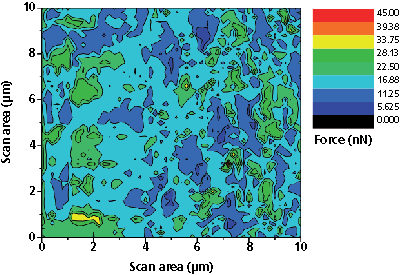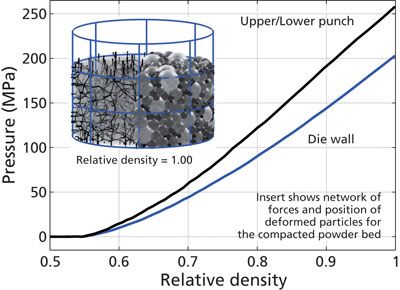Tablet-Sticking Solutions
Analytical methods are being used to troubleshoot tablet-sticking problems and to develop screening methods and predictive models to more quickly find solutions.

Tablet sticking, in which material adheres to the surface of a tablet-punch face, is an ongoing and costly problem in pharmaceutical manufacturing and is a significant issue for drug-product formulators. Analytical methods can be used to troubleshoot sticking problems and develop screening methods. Experts are also seeking to increase fundamental understanding of the underlying causes of sticking and to develop predictive models to more quickly find solutions to specific sticking problems.
Many variables affect tablet sticking, including formulation (e.g., API, excipient, and other components), granulation properties (e.g., particle-size distribution), tablet design (e.g., tablet shape), tablet-press conditions, tablet-tool properties, and tool maintenance. There are nearly as many possible solutions as there are variables.
Tooling solutions
Tooling-equipment suppliers have found, for example, that proper tooling and tooling maintenance can help prevent sticking to a certain extent. I Holland champions a rigorous seven-step maintenance method that includes cleaning, assessing for damage or wear, repairing, measuring to ensure that dimensions are maintained, polishing, lubricating, and storing properly (1).
Microscopy can be used to assess the surface of a punch. “You can’t see a 10-μ scratch with the naked eye, but 2-μ particles will stick to it. Suddenly, you have a film spot that acquires more powder and is then big enough to cause defects,” explains Charles Kettler, director at Natoli, a tooling and equipment manufacturer. “Microscopy allows you to see if the tool has a fundamental problem.” This type of analysis could be used to identify a problem with tool handling, such as whether a polishing technique is more aggressive than it should be.
Equipment suppliers have also developed special steel types and coatings to prevent sticking. Finding the best material, however, can be a time-consuming process that involves field testing at a customer’s site and laboratory testing to identify a solution to each unique problem. I Holland’s Tableting Science Anti-Stick Research (TSAR) program, in collaboration with the University of Nottingham’s School of Pharmacy and experts from the Laboratory of Biophysics and Surface Analysis, both in the United Kingdom, is developing a predictive tool to identify the best punch or die-coating solution to prevent sticking in a given formulation. The company says that the tool will provide quick guidance without time-consuming tests (2).
TSAR-program researchers used atomic force microscopy (AFM) to map the adhesive forces on a tablet-punch face, such as the example shown in Figure 1. AFM can elucidate local chemical and mechanical properties, such as adhesion and elasticity, and even molecular bond rupture strength, explains Rob Blanchard, research, development, and quality systems manager at I Holland. Such adhesion maps show differences in adhesion caused by surface topography differences with various coatings at different humidities. The TSAR researchers also used X-ray photoelectron spectroscopy (XPS), Raman spectroscopy, and time-of-flight secondary ion mass spectrometry (TOF-SIMS) to visualize the chemical distribution of selected ions on the surface and better understand the interactions involved in sticking. Principle component analysis (PCA), a multivariate statistical technique, is being used to analyze these data and generate correlations to explain how the chemistry of a system affects adhesion with different surface coatings. This understanding of how the formulation components behave and interact to cause sticking will then be used to develop the predictive tool. The predictive tool will be validated using results from compression experiments with various formulations and punch-tip coatings.

Although proper maintenance and optimized coatings are essential, the root cause of sticking is often the formulation properties or particle size. If these properties are already set, manufacturers must find a solution in the tablet press or tooling. Ideally, however, the drug could be formulated to have a lower tendency for sticking.
Screening tools
Various methods are available for assessing sticking problems and screening for sticking propensity, but the use of these tools has been limited by their complexity. Many instead rely on subjective visual inspection, which limits the ability to screen consistently. To address this deficit, researchers at Pfizer developed a simple, quantitative screening tool for drug-product tablet-sticking propensity that can be used to rank the degree of sticking for many formulations and their ingredients using a custom tableting punch with a tip that can be removed to measure the amount of adhered powder (3). “This gravimetric method has been successful for classifying sticking severity during drug product design and has significantly reduced risk during scale up,” says Matthew Mullarney, principal scientist at Pfizer. “We can customize both our API and drug-product formulations to ensure they do not exceed in-house threshold values in the laboratory before manufacturing any bulk-tablet supplies.” The screening method can also be used to plan for manufacturing campaigns (e.g., tooling/tablet inspection frequency or cleaning requirements) and to troubleshoot the root cause of sticking problems in large-scale manufacturing.
Equipment supplier Natoli finds this gravimetric method useful for predicting the sticking tendency of formulations at or prior to clinical-scale production and has tested small amounts of API with a given formulation, tablet design, and tool steel and coating for propensity to sticking (2). Further work using this method will be performed by researchers at the Natoli Institute of Industrial Pharmacy Development and Research in partnership with Long Island University’s Arnold and Marie Schwartz College of Pharmacy in New York. Laboratory facilities for the institute are currently being constructed at the university and are expected to open in late 2013 with fully qualified equipment, reports Kettler. Various projects at the institute will be used to further develop fundamental understanding of tableting problems and formulation studies.
“Now that simpler tools are available for screening and classifying, both pharmaceutical companies and academic groups can focus on relating other material properties, such as molecular structure, particle size, and mechanical properties, to sticking and building models that describe the sticking mechanism,” adds Mullarney. “We may soon find that sticking is multimechanistic, and a variety of molecular chemistry, particle, and bulk-powder characterization tools and models will be needed to parameterize the sticking mechanisms of different powders.” Once these mechanisms are understood, APIs and drug products can be designed to reduce sticking propensity. Current work at Pfizer is focused on understanding why some APIs appear stickier than others and investigating the contribution of a solid API’s molecular attributes (e.g., surface chemistry and morphology) to sticking. “Both computational models and experimental approaches will be necessary to get us closer to the root causes. Additionally, tooling designs and surface treatments are also being studied,” notes Mullarney.
Model predicts tablet microstructure
Work on building models to describe sticking is progressing. Marcial Gonzalez and Alberto Cuitino at the Engineering Research Center for Structured Organic Particulate Systems (C-SOPS) at Rutgers, the State University of New Jersey, have developed mechano-chemical models and computational methods that predict the evolution of microstructure and interparticle forces during powder compaction. Because most properties of a compacted tablet can be attributed to its microstructure, the models can be used as tools to understand and predict how manufacturing process variables affect product performance.
The tendency of powders for sticking and picking is described by the adhesion of powder to die walls and tool surfaces and can be explained by a competition mechanism between interparticle bonding and particle-wall adhesion, explained Cuitino (2). If particle-wall adhesion is stronger than interparticle bonding, the weaker interparticle bonds will break when the tablet is ejected and cause sticking or picking. If particle-wall adhesion is weaker than most interparticle bonds, internal cracks might occur. Ideally, if enough bond strength was developed during compaction, no defects will occur. If the network of particle-particle and particle-wall forces are known, competing effects can be quantified, said Cuitino. Because this measurement is not possible with current experimental techniques, the researchers developed a nonlocal formulation of contact mechanics that more accurately describes the powder system (4). This fully discrete model is based on particle mechanics and describes every particle in the powder bed as an individual entity. “The collective rearrangement and deformation of the powder bed is resolved by the fully discrete model and the microstructure of a compacted specimen is then predicted,” explains Gonzalez.
These computational models are capable of resolving and tracking the micro-structural evolution of a powder bed compacted into relative densities close to 1 (i.e., into a solid tablet with porosities close to 0, which is typical of pharmaceutical products). Figure 2 shows a compaction curve predicted by the model; the black line corresponds to the pressure applied by upper/lower punches in order to achieve a given relative density, and the blue line corresponds to the pressure experienced by the die wall as a result of powder compression. The right-hand side of the insert in Figure 2 illustrates the microstructure of the tablet with spherical particles of different sizes. In the left-hand side of the insert in Figure 2, lines illustrate the network of interparticle forces and particle-wall forces predicted by the model, with stronger forces indicated by thicker lines.

Experimental techniques, such as a tablet-press simulator and a tablet-hardness test, are used to calibrate material properties employed by the model (e.g., elastoplastic constants and fracture toughness of the particles). The model can be used to predict powder behavior and properties for given tablet-press conditions (e.g., tooling geometry and punch displacement) and powder formulation (e.g., the total mass and particle-size distribution of each component of the formulation).
Other work in the early stages at C-SOPS uses tomography to measure the density gradients across the tablet at different compressions. These measurements can identify internal cracks or other near-surface defects that cannot be detected visually. These defects can be correlated to the shape of the tooling (e.g., punch shape). “Given this information, one can optimize the shape of the punch in order to minimize internal defects or avoid the formation of areas prone to chipping or capping,” explains Gonzalez.
Conclusion
Current research is adding to the understanding of how adhesive forces and particle interactions cause sticking, and researchers are building models to elucidate sticking mechanisms. Results will be used to find better solutions to sticking problems by optimizing tooling and, eventually, improving API and drug-product formulations.
References
1. T. Higgins, Pharm. Tech. 37 (2) 36-37 (2013).
2. J. Markarian, Equipment & Processing Report (EPR), “Researchers Seek Solutions to Tablet Sticking”, online, Aug. 21, 2013, www.PharmTech.com/stickingsolutions, accessed Sept 6, 2013.
3. M. Mullarney, B. MacDonald, and A. Hutchins, Pharm. Tech. 36 (1) 57-62 (2012).
4. M. Gonzalez and A. M. Cuitino, J. Mechanics and Physics of Solids 60 (2) 333-350 (2012).

Drug Solutions Podcast: A Closer Look at mRNA in Oncology and Vaccines
April 30th 2024In this episode fo the Drug Solutions Podcast, etherna’s vice-president of Technology and Innovation, Stefaan De Koker, discusses the merits and challenges of using mRNA as the foundation for therapeutics in oncology as well as for vaccines.
Pharmaceutical Tariffs Are Imminent: How Industry is Bracing for Impact
April 16th 2025On April 14, 2025, the Trump Administration launched a national security-driven investigation into pharmaceuticals, a move that will likely result in tariffs being placed on pharmaceutical drugs, ingredients, and other components that are imported from outside of the United States.